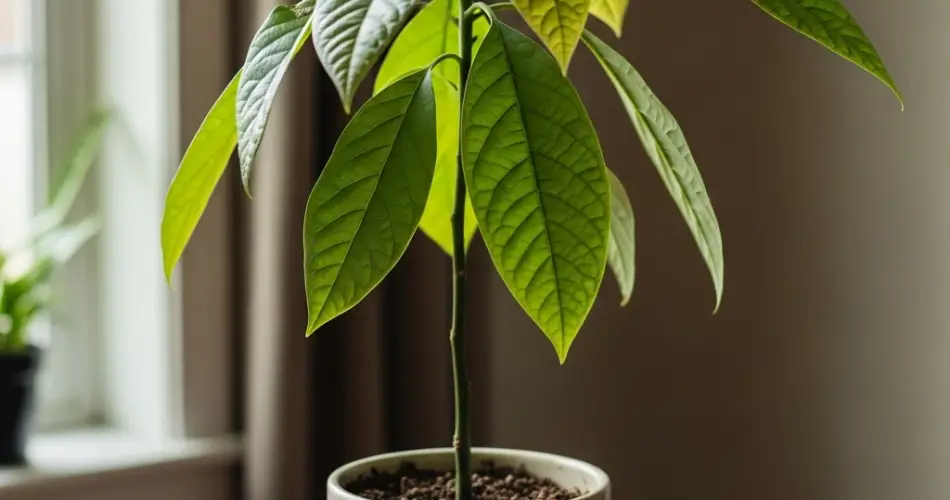Avocado trees are cherished not only for their delicious fruit but also for their lush foliage and attractive blooms. Growing an avocado tree that blooms vibrantly throughout the year may sound ambitious, but with the right care and environment, it’s achievable—even for gardeners who are new to avocado cultivation. This guide will walk you through the essential steps to help your avocado tree thrive, bloom beautifully, and potentially produce fruit year-round.
Understanding Avocado Growth and Blooming
Avocado trees (Persea americana) are subtropical plants native to Central and South America. They generally produce flowers in the spring, but with proper care, you can encourage multiple blooming cycles or extended flowering periods. Vibrant blooms indicate a healthy tree and are the first step toward fruit production.
Avocado blooms are small and greenish-yellow, often overlooked but essential for pollination and fruit set.
Choosing the Right Avocado Variety
There are several avocado varieties, but the two most common groups are:
-
Mexican or Mexican hybrid: Hardy to cooler climates and tend to have good flowering habits.
-
Guatemalan and West Indian: Prefer warmer, frost-free environments.
For year-round blooms, varieties that adapt well to your local climate and have longer flowering periods are ideal. Dwarf varieties are also great for container growing or smaller spaces.
Starting Your Avocado Tree
You can start an avocado tree from a seed or buy a young grafted tree.
-
From seed: While fun and economical, avocado trees grown from seeds may take longer to bloom and bear fruit.
-
From grafted seedlings: These trees typically bloom and produce fruit faster, making them suitable for year-round bloom goals.
Ideal Growing Conditions
Avocados thrive in warm, sunny environments with well-draining soil.
-
Light: Full sun exposure for at least 6 hours daily is crucial for healthy growth and flowering.
-
Temperature: Maintain daytime temperatures between 60-85°F (15-29°C). Avoid frost, as it can damage blooms and foliage.
-
Soil: Slightly acidic to neutral soil (pH 6-7) with excellent drainage prevents root rot and supports nutrient uptake.
-
Water: Avocados prefer consistent moisture but dislike soggy soil. Water deeply and allow the soil surface to dry between watering.
Planting Tips
If planting outdoors:
-
Choose a site with good air circulation to prevent fungal diseases.
-
Space trees 15-20 feet apart to give them room to grow.
-
Amend the soil with organic matter before planting.
-
Plant the tree at the same depth as it was in the pot, and water well after planting.
For container growing:
-
Use a large pot (at least 20 inches wide) with drainage holes.
-
Use a high-quality potting mix formulated for citrus or tropical plants.
-
Repot every 2-3 years as the tree grows.
Encouraging Vibrant Blooms
To promote prolific and vibrant blooming throughout the year:
1. Proper Fertilization
-
Feed your avocado tree with a balanced fertilizer rich in nitrogen, phosphorus, and potassium.
-
Use fertilizer formulated for fruit trees or citrus.
-
Apply fertilizer every 6-8 weeks during the growing season.
-
Incorporate micronutrients like zinc and iron to support flowering.
2. Water Management
-
Consistent watering is key to avoiding stress, which can inhibit blooming.
-
Mulch around the base to conserve moisture and regulate soil temperature.
-
Avoid overwatering to prevent root diseases.
3. Pruning for Blooming
-
Prune your avocado tree annually to encourage new growth, which supports more flowers.
-
Remove dead or crossing branches to improve airflow and light penetration.
-
Light pruning can be done after harvest or in early spring.
4. Pollination
-
Avocado flowers are unique with a two-stage opening (type A and type B flowering).
-
Planting both type A and type B avocado trees improves cross-pollination, increasing fruit set.
-
Alternatively, hand pollinate flowers to ensure better fertilization.
5. Stress Reduction
-
Protect your avocado tree from pests and diseases.
-
Avoid excessive fertilizer use, which can promote leaf growth over flowers.
-
Maintain stable growing conditions without drastic changes in light or temperature.
Common Challenges and Solutions
-
Leaf yellowing: Often due to nutrient deficiencies or poor drainage.
-
Flower drop: May be caused by drought stress, temperature extremes, or poor pollination.
-
Pests: Watch for mites, borers, or scales and treat with appropriate organic insecticides.
-
Root rot: Avoid waterlogged soil and improve drainage.
Harvesting and Enjoying Your Avocados
While vibrant blooms are exciting, the ultimate reward is fruit production. Depending on the variety, fruit may take 6-18 months to mature after flowering. Harvest avocados when they reach mature size but are still firm.
Use your homegrown avocados fresh in salads, smoothies, or homemade guacamole.
Final Thoughts
Growing an avocado tree that blooms vibrantly all year long requires a mix of the right variety, ideal growing conditions, and attentive care. Whether in your garden or a large container, providing consistent water, proper nutrition, and good light will encourage your avocado to flower repeatedly. With patience and dedication, your avocado tree will become a beautiful, productive centerpiece that offers both stunning blooms and delicious fruit year-round.



